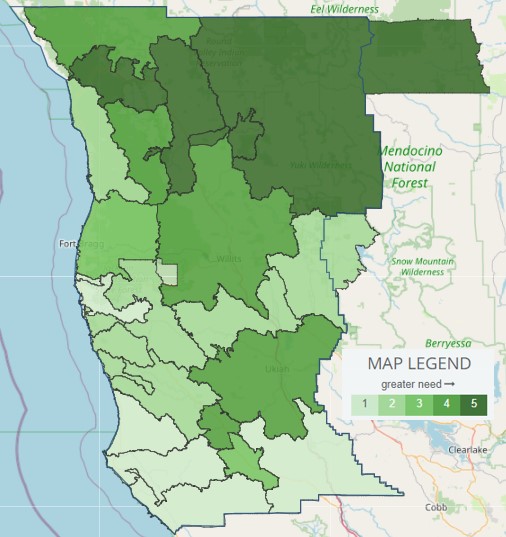2020 Food Insecurity Index
What is Food Insecurity?
- Food insecurity is defined as the disruption of food intake or eating patterns because of lack of money and other resources. Food insecurity does not necessarily cause hunger, but hunger is a possible outcome of food insecurity.
- Food insecurity is present in every county in the US.
- Food insecurity rates can act a a bellwether for economic, health, and social inequality and injustice in communities.
- Social stigma surrounding food insecurity prevents non-profits and research organizations from getting an accurate count or estimate of the impact of food insecurity in communities.
What is the Food Insecurity Index?
The Food Insecurity Index is a tool developed by Conduent Healthy Communities Institute. It is a measure of food accessibility that is correlated with social and economic hardship.
Every community can be described by various social and economic factors that are known to be strong determinants of health outcomes and opportunities to thrive.
Conduent Healthy Community Institute's Food Insecurity Index is calculated using social and economic factors ranging from household expenditures to perceived health status that may impact a household's ability to access and purchase food. Based on these factors, an index value (from 0 - 100) is generated for each zip code, census tract, and county in the nation. Communities with the highest values are estimated to have the highest food insecurity, which is correlated with household and community measures of financial stress, such as Medicaid enrollment, SNAP enrollment, and mental health burden.
To identify the relative level of need within a community, the national index values for each location (e.g., zip code) in the community are sorted from the low to the high, then divided into 5 Ranks. These ranks are used to color the Food Insecurity Index map, with darker coloring associated with higher Food Insecurity Index values.
For example, a zip code with an index value of 50 would be average, as compared with the rest of the country, but an index value of 50 could be high, compared to the values of other zip codes in your selected area.
This index combines multiple socioeconomic and health indicators into a single composite value. As a single indicator, the index can serve as a concise way to identify which areas are of highest need and why you may need to focus your efforts on those areas. Let the index help you tell your story and collaborate in your community!
Data Tied to Action
Ways the data can be used in your communities:
- Support local and national food banks, food pantries, and food assistance organizations.
- Lobby for increasing in school funding for meals or allocation of SNAP funds.
- Food insecure households experience the inability to afford other necessities.
- Engage in local and national movement to expand Medicare and Medicaid.
Author:
Patrice Mascolo
Resource Date:
May 4, 2021
Resource Type:
Topics:



